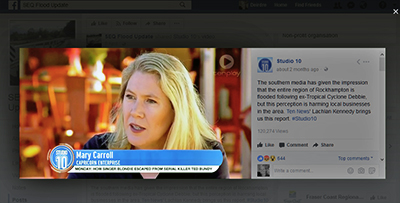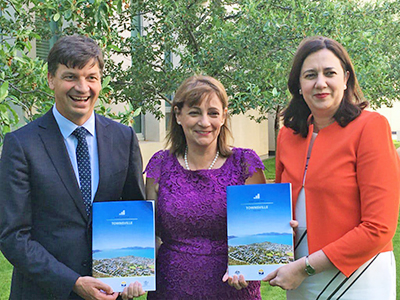Designs on new Maroochydore CBD
BUILT ENVIRONMENT construction giant John Holland is taking a stake in the re-imagined new Maroochydore city centre, looking at a completed development value of more than $200 million.
Sunshine Coast Mayor Mark Jamieson recently signed a memorandum of understanding (MoU) with John Holland representatives, the University of the Sunshine Coast and SunCentral Maroochydore Pty Ltd . The deal opens the way for negotiations on developing multiple lots in the city centre.
Discussions between the parties include potential pre-commitments from the Sunshine Coast Council and the University of the Sunshine Coast, subject to further negotiations.
Mayor Jamieson said the MoU demonstrated the “superb, quality investment opportunity that the Maroochydore city centre offers in one of the fastest growing and most dynamic regions in Australia”. 
“To have a company of the calibre of John Holland, with an international track record, seeking a significant stake in the new Maroochydore city centre is a huge vote of confidence by a Tier One property developer in the future of the Sunshine Coast,” Cr Jamieson said.
“We are creating Australia’s first truly smart city for the 21st Century – one which will generate thousands of construction jobs, more than 15,000 permanent jobs and provide a $4.4 billion boost for the local economy.
“John Holland obviously understands the value in being part of the early stages of this development and the growth trajectory of our region, with the development of a new CBD, the opening of the new Sunshine Coast University Hospital, the expansion of the Sunshine Coast Airport and our plans for an international broadband submarine cable linking the region directly to global markets.”
Sunshine Coast Council has already committed to having its primary civic presence in the core commercial precinct.
“This will include customer service facilities, a council chamber and work space accommodation for staff and Councillors, although we will continue to maintain a decentralised work force at Caloundra and Nambour,” Cr Jamieson said.
“Our council represents the whole region and will always ensure it maintains a strong presence in major centres like Nambour and Caloundra, in the interests of accessibility to our customers and our community.
“But equally it is important that our presence in Maroochydore is consolidated and housed in a corporate headquarters in our new city centre.”
John Holland CEO Joe Barr said the Maroochydore CBD development was a landmark project which would leave a legacy for future generations on the Sunshine Coast.
Mr Barr said the company believed the city centre had enormous potential, being in the heart of one of the nation’s most desirable and fastest growing regions and just 10 minutes from Australia’s newest international airport, due to open in late 2020.
“If you look at what’s happening right now and the infrastructure being rolled out, it’s very clear the Sunshine Coast is on the move and has an incredibly bright future,” Mr Barr said.
“John Holland is keen to pursue this development opportunity and we look forward to releasing further detail about our proposal in due course.”
The Sunshine Coast is not new to John Holland, having successfully delivered the $150 million Sunshine Coast University Private Hospital in Kawana, which opened in 2013.
The company also has a strong development pipeline with investments in Brisbane, Sydney, Melbourne and Adelaide.
University of the Sunshine Coast vice-chancellor, Greg Hill said the university was participating in the exclusive negotiations with John Holland, the council and SunCentral Maroochydore, with a view to a future presence in the Maroochydore city centre. This may include a combination of student accommodation, teaching and community spaces.
“This is an exciting opportunity, and, after working together for 20 years, our partnership with Sunshine Coast Council is being taken to a new level,” Professor Hill said.
SunCentral chairperson Doug McTaggart said submissions had been received from companies across a range of sectors since expressions of interest in the core commercial precinct opened last year.
“The core commercial precinct in the Maroochydore city centre includes lots for commercial office buildings, retail space and approximately 600 residential apartments, as well as a new waterway, parks and plazas,” Dr McTaggart said.
“John Holland’s proposal for the Maroochydore CBD is certainly impressive and discussions with their representatives are well advanced.
John Holland’s submission could see the company awarded development rights over key commercial lots currently in the market.
“This is just the beginning. It’s very clear that the Sunshine Coast region is coming of age and the future is here” Mayor Jamieson said.
ends

 How to resolve AdBlock issue?
How to resolve AdBlock issue? 




